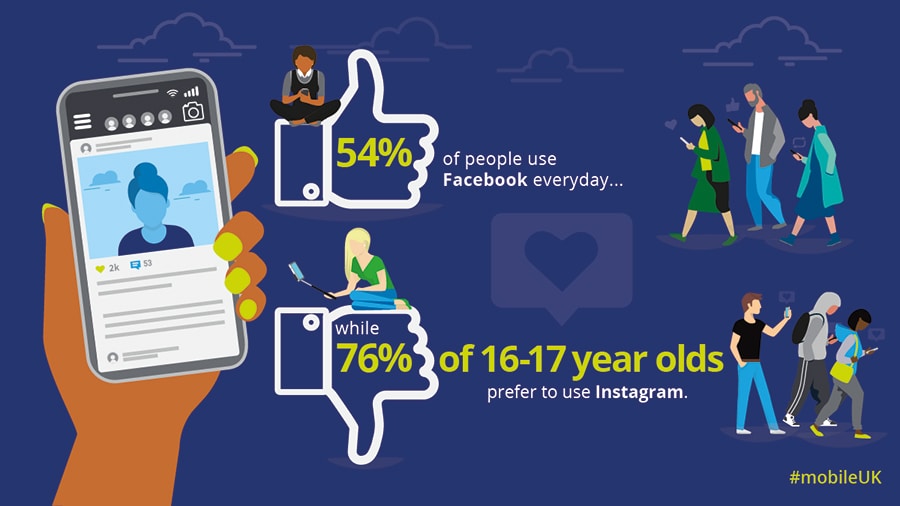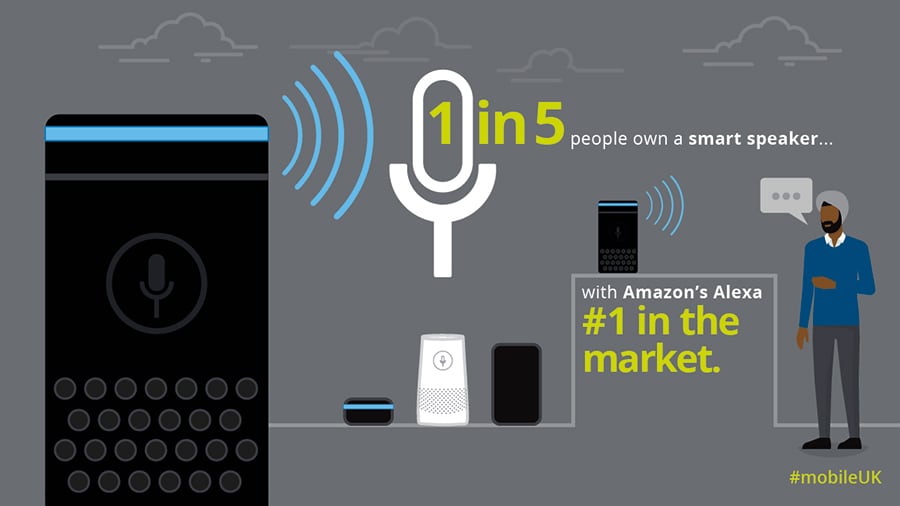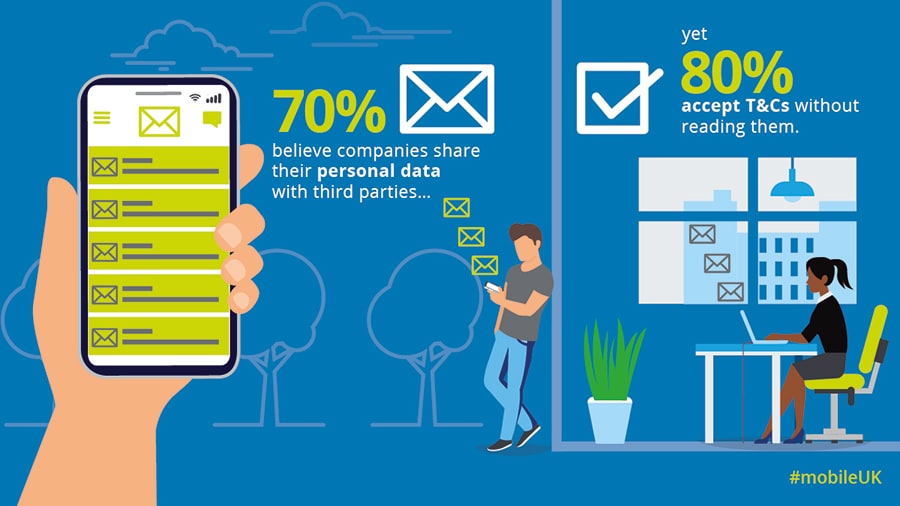Connected Lives
Modern lives are both complex and connected. For most of us, the key to unlocking that connectivity lies with our smartphone: it’s the main way we connect with friends, family and businesses, and it’s increasingly the main way we link to a growing range of other data-enabled devices, such as smart speakers and fitness trackers. 95% of smartphones are used every day, and the capability of those phones to affect every corner of life grows year on year.
A growing number of everyday activities, from shopping to messaging to watching TV, sees us instinctively reaching for our phones. That behaviour spurs manufacturers and service providers to improve all aspects of smartphone capability: better apps, better functionality, better features. Banking, buying and browsing applications are now all designed for the six-inch screen.
And we’re reliably informed the best is yet to come. Phone capability should take a big leap forward next year with the widespread launch of 5G in the UK. By the end of 2020, all four operators in the UK will have launched their 5G services, and with it should come more reliable connections, speeds we’ve never seen before, and near-instant connections.
Just as 4G revolutionised the use of maps for the likes of Uber, Bolt and Deliveroo, 5G will ramp up connectivity and continue to disrupt business. With only a few 5G handsets currently on the market, it may take a while for everyday consumers to feel the full benefit, but by 2021, all major brands are likely to offer 5G phones at a range of price-points.
What’s more, the impact of 5G is set to make our phones even more useful – perhaps indispensable. In the UK, the majority of home internet connections are currently fixed-line, with only 6% of our survey respondents connected solely via mobile. With the spread of 5G, consumers may well be tempted to ditch their broadband setup and use their phones for at-home data instead. In the US, 20% of consumers do this already – and in Finland the proportion is over 40%.
But it’s not all plain sailing. With greater connectivity comes a greater volume of personal data being harvested or shared, and there has been a constant stream of high-profile, high-stakes stories in the media about data misuse. But the introduction of GDPR in the UK doesn’t seem to have changed our behaviour – if anything we’re now sharing more information. A whopping 80% of mobile users accept terms and conditions without reading them. Sounds barely credible – but do you read the Ts & Cs?
52% of mobile users access a social network daily, and many remain unaware of the extent of data-sharing that’s taking place – from identifiers such as email addresses, to the sharing of browsing activity.
In fact, daily usage of social networks on smartphones has reached an all-time high – up 4% in the past two years – with the increase coming predominantly from older age bands (45+). And the smartphone is the overwhelming device of choice for accessing social platforms: male, female, young or old – all prefer their smartphone to any other device. The same is true of video calls and VOIP, with only the 65+ category still preferring to use a laptop where video calling is concerned.
Another growing trend in the smartphone world is biometric authentication. 48% of smartphone owners who use biometric readers used them to authorise payments; 32% to authorise money transfers. For consumers, it’s all about convenience; for banks, it’s lower risk. What’s also true is that some don’t fully appreciate how biometric authentication adds another layer to the unseen data being shared between consumer and provider.
But data-sharing and connectivity isn’t all negative, despite media assertions about the risks. For example, greater connectivity provides health benefits, from simple exercise tracking to relaying potentially life-saving telemetry to medical professionals. And increased data-sharing can help to target products and services, rather than users being overwhelmed with every conceivable mobile offer available.
Voice-activated smart speakers also divide opinion. Despite their convenience and novelty factor, some regard the always-on nature of these devices as overly intrusive, bordering on surveillance. But that hasn’t stopped one in five people from owning one already, with Amazon’s Alexa clearly leading the field. It’s surely only a matter of time before these little gadgets will have benefits beyond playing music and checking your morning commute.
Voice activation in general is a growing trend. More of us are saying “OK Google” and “Hey Siri” than ever before, with 25% of respondents saying they’ve used Apple and Google’s voice assistants in the past year. This is on a par with Amazon, although Alexa has seen the biggest jump in usage – from 14% in 2018 to 25% now.
It’s not all about smartphones, of course, as most of us have access to multiple connected devices. Indeed, smartphone adoption is nearing a plateau in most developed markets, but it’s still the device we all reach for first. Usage intensity has been increasing across all age groups, and all recent attempts to create other devices with equivalent appeal have failed. In this increasingly connected world, it seems the strongest connection of all is the one between your phone and the palm of your hand.







